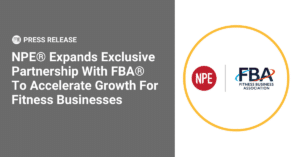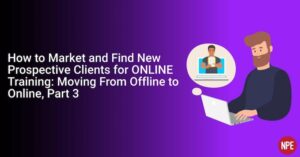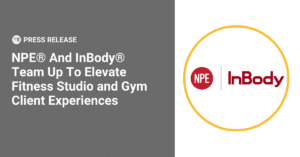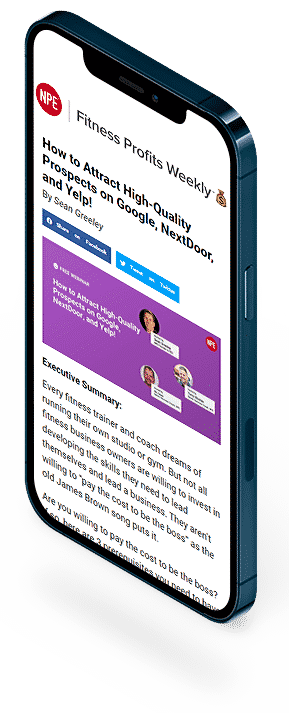How to Create a Sales and Marketing Plan for Your Gym Business that Ensures Consistent Growth
By Sean Greeley
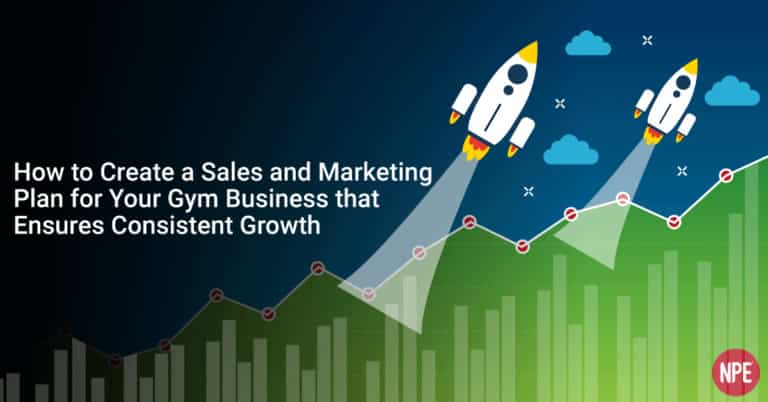
Consistently attracting (and keeping) the right clients into ANY business is an ongoing battle.
You’ve gotta hustle to bring new clients in the door, get busy serving them, and then it’s all too easy to lose momentum with the marketing activities that continue driving prospects to your business.
Not to mention the fact that competition is always increasing in the marketplace, and if you’re not consistently developing your sales and marketing systems, messaging, and more… your business will forever struggle to make it into the big time.
That’s why it’s “mission critical” to create a rock-solid sales and marketing plan to deliver the right quality and quantity of new clients your business needs to hit its goals.
Growth does not happen by accident.
It happens when you plan and work for it…. week after week.
Read on to learn more about how you can craft a plan that gives you everything you need and then some.
1. Get a clear vision for your success and develop a positive mindset.
“Before every shot, I go to the movies.” ~ Jack Nicklaus, Golf
All champions see the future before they create it. And whether in sports or business, success requires a clear vision and a mindset to go create that which you don’t yet have and cannot see.
That’s why the first step in creating any plan is to first answer the following questions:
• What does success look like for your business?
• When you visualize and see the future in your mind, what will it feel like when you’ve accomplished your vision?
Take time to make the movie in your mind. And practice working on it for at least a few minutes daily.
2. Define your core values, purpose, and mission for the business.
“Profit is not the legitimate purpose of business. The legitimate purpose of business is to provide a product or service that people need and do it so well that it’s all profitable.” ~ James Rouse
A lot of people have made a lot of money in business without ever defining their values, a purpose, or a mission.
But you’ll find it quite challenging from a leadership perspective to build a team and company that lasts for more than just a couple years without getting very clear about what you stand for, why you do what you do, and where you’re going.
Taking the time to define what your business stands for allows you to lead your sales and marketing (and your business) in the right direction.
Your purpose fuels the work to be done, and your mission will focus your efforts to achieve a goal.
3. Develop a profile of the perfect client you want to attract.
The most important element for the success of ANY business is ensuring you’ve got a great market to serve that’s well-defined and easy to reach.
Get THIS right and everything gets easy.
Get this wrong, and there is no amount of good messaging, technology, or magic that will deliver results.
Here are the three questions to guide you in defining your market:
Who are they?
Define who they are, and be specific.
Are you serving mainly men or women? What age range? What else do you know about them or what defines them? Are your best prospects 30-year-old new mothers, or 50-year-old executive men?
The more specific you can be, the better. Also just as important is getting clear about who you DON’T want to work with. Not everyone is a good prospective client for your business.
Where do they live or work?
For local service businesses, your location must be convenient for your clients to visit multiple times each week. Generally speaking, it’s best to be within 15-30 min travel time from where someone lives or works each day.
Get clear on this because it will further narrow down your targeting not only for online advertising, but also for identifying key partners, direct mail opportunities, and more.
Why do they buy?
At the time they signed up with you, every new client has a primary emotional driver that is behind their actions and decision to enroll in your program.
They were either feeling really bad about a problem they were struggling with (most likely), or really excited and driven to achieve a goal.
Taking time to know and understand their “why” allows you to not only best direct your clients (and athletes) to their goals… but also communicate with them through your marketing in a way that will ensure you get their attention.
4. A positioning statement that distinguishes your business from the competitors.
A positioning statement is an expression of how your service and brand fills a particular consumer need in a way that your competitors don’t.
It must answer the following questions:
• Who is your target market?
• What category are you competing in?
• What primary benefits do you provide your clients?
• Why should they believe the claims you make about your services and how you can help them?
We’ve already covered target market, so let’s talk about category.
There are many categories. The point is to define yours. Are you competing against other gyms? Other personal trainers? Other weight loss programs?
You can’t expect to win the war against them all. So choose a fight you can win by carving out the category you know you can own.
For defining the primary benefits you provide your clients, don’t go with just the easy ones like “weight loss” or “lose inches.”
Ask your clients what they love most about working with you.
How do they describe the benefits they value most… in their own words and language?
Then when it gets to proving your claims, list all the credibility boosters you’ve got to work with.
How long has your business been around? How many clients have you served? Have you won any particular awards? What certifications do you and your staff hold? What case studies, before and after photos, and more can demonstrate the results you’ve gotten for others?
The more you’ve got to work with here, the better.
It doesn’t matter what you say about yourself – the more you can leverage what others (clients, media outlets, and more) have said, the more credibility you’ll establish in your messaging.
5. Create compelling offers that give your prospect a reason to respond.
When you’ve got a well-defined market, and good positioning… then more than half your marketing battle is won.
But now it’s time to go fishing.
And that means you’ve got to get the right bait on your hook.
Your “bait” in this case is your offer.
There are two types of offers: free and paid.
Free offers are generally used for list building in exchange for a prospect sharing their contact information OR to move them forward in a simple sales process.
Examples of free offers include case studies, guides or reports, cheat sheets or handouts, toolkits, free trials, free workshops, quizzes or surveys, assessments or tests, and consultations.
Paid offers on the other hand qualify a prospect for a larger sale, or discount an existing product or service offering in order to generate response.
Examples of paid offers include trial periods of services (less than 30 days is best for fitness service offerings), assessments or tests, complimentary products or services, and more.
6. Messaging that connects emotionally with your prospect.
Messaging is all about how you communicate with your prospects. What do you say to them in order to inspire them to take action?
Imagine you’re knocking on their door, they open and you’ve got 5 seconds in order to keep them interested enough to invite you in.
What will you say?
Here are some questions to guide you in the right direction:
• What problem(s) does your prospect want to solve?
• What goal(s) do they want to achieve?
• How do they feel about their problem? What pain is it causing them?
• Why does the goal matter to them? How will they feel once they’ve achieved it?
• What positive benefits do they hope to gain with your services?
• What are the negative consequences of not taking action?
If this were easy, then everyone would be a good copywriter.
The truth is writing copy is easy…. when you know what to say and how to say it!
“The aim of marketing is to know and understand the customer so well the product or service fits him and sells itself.” ~ Peter Drucker
7. Consistent application of good marketing strategy applied across all phases of the Fitness Marketing Lifecycle.
The Fitness Marketing Lifecycle is the process by which a person evolves from knowing nothing about your business, to raising their hand to learn more, to becoming a client, and then eventually becoming a raving fan who tells everyone they know about you.
Each step of the lifecycle is important. And at each step, you’ll adjust the way you communicate, the messages you deliver, and the call to action you make.
Attract: There are many ways to attract prospective clients to your business.
Just remember, when you own a local service business, don’t get stuck behind the computer.
It’s easy to get caught behind a desk… especially when you’re crafting a marketing plan or working on digital advertising.
But relationships are the goal of all your planning and activity, so don’t forget what matters most.
Get out and build relationships in your community!
That being said, there are many strategies you can use to attract potential prospects to your business and grow your list.
• Advertising – Facebook, Google Adwords, local magazines, coupon books, what else?
• Networking & Partners – BNI, Chamber of Commerce, Rotary, local business association groups. Build relationships with like-minded professionals that serve your target market.
• Events – Public speaking, workshops, health fairs, races, and more.
• What else? – Always be on the lookout for new strategies and leadsources where you can easily connect with prospective clients for your business.
Capture: Capturing contact information is critical to facilitating your ongoing marketing activity.
If you don’t have someone’s contact info, you can’t follow up with them. And follow-up is the name of the game.
Maximizing conversion of capturing contact information will dramatically affect both your short and long-term sales and revenue results.
• Website – Optimizing your website and setting up good landing pages is essential.
• Phone – Answering the phone live, having effective scripting in place, and capturing contact information for follow-up.
• Face-to-face – Walk-in traffic, public speaking workshops, and more… always make an offer in exchange for contact details.
Nurture: Only a small percentage of the prospects you’re in front of will be ready to buy now.
You can’t create demand in the marketplace, but you can keep in touch and stay positioned so when someone is ready to buy… they come to you.
• Automated marketing funnels – For mid-to-high price fitness services in the 200-500+/month range, a 14-30 day follow-up sequence is generally best.
• Phone – Outbound phone calls are one of the easiest and most effective follow-up tools. Don’t be scared to pick up the phone and speak with someone you can help.
• Text message – For prospects too busy to answer or return calls, everyone can read and reply to a simple text message.
• Newsletters – Emails should be sent at minimum 1x a week to unconverted leads and prospects. It’s simple, fast, and free.
• Social Media – An easy way to build relationships and allow others to connect with your brand and community.
• Workshops – Running workshops monthly in your facility is a great way to position yourself as an authority expert and give others a low-risk way to get to know what you’re all about.
Sell: Selling is where ‘the rubber meets the road.
Every prospect is qualified before meeting face-to-face for a consultation.
And if you’re selling a short-term trial program, set up an orientation that “pre-frames” the goal of the trial period while also scheduling a consultation after the trial period has completed.
Serve: The goal of business is to get and keep a customer.
And “after the sale” is where you get the opportunity to deliver such an extraordinary customer experience that your business stands out like a lighthouse in the marketplace.
“There is only one boss. The customer. And he can fire everybody in the company from the chairman on down, simply by spending his money somewhere else.” ~ Sam Walton, founder of Walmart
During trial offers, it’s especially important that you prove you can deliver great value to your customer.
• Help your clients create change with simple actions
• Support them in gaining momentum and confidence
• Build and develop relationships with your new client and your entire community
Upsell: Good businesses deliver a product or service once it’s sold.
GREAT businesses are constantly asking the question, “How can I better serve and support my clients in solving their problems and achieving their goals?”
That line of thinking will lead you to additional offerings that make good sense to add to your business at the right time.
• Solve additional challenges your clients are struggling with
• Help people achieve their goals faster, with less effort
• Introduce complimentary products and services that support your primary offerings
Ask to Refer: Asking for referrals is one of the simplest and oldest forms of marketing there is. But it doesn’t happen by accident – it happens by taking action with good strategy and systems.
“People influence people. Nothing influences people more than a recommendation from a trusted friend. A trusted referral is the holy grail of advertising.” ~ Mark Zuckerberg, Facebook
• Ask your clients to support your mission
• Who do they know that (insert your profile client statement that defines WHO, WHERE, and WHY here)?
• Make it easy for clients to connect others with your business
• Thank them for their help!
Putting It All Together (Plan)
As you work through assembling the components of your plan, it’s then time to put it all together.
“Unless commitment is made, there are only promises and hopes; but no plans.” ~ Peter F Drucker
Here are a few important considerations in that process:
1. Assess where your business has the greatest opportunity for immediate improvement (in every business there are ‘easy wins’ that can move you forward quickly… identify them and take action).
2. Determine your available resources (time, money).
3. Create a plan and start moving forward.
4. COMMIT to doing whatever is necessary to reach your goals.
5. Track your results, adjust as needed, and “upgrade” your plan to reach your goals faster.
Best Practices
Lots of business owners try to craft a yearly plan.
While that can be helpful, try just focusing on 90 days at a time.
A lot of changes happen quickly in a growing business.
If you can get your marketing working 2-3 months ahead, you’ll be light years above of your competition.
And the most important aspect of every plan is consistent action.
Consistency with marketing will grow your business from a stage 2 to stage 4 business (and well beyond).







